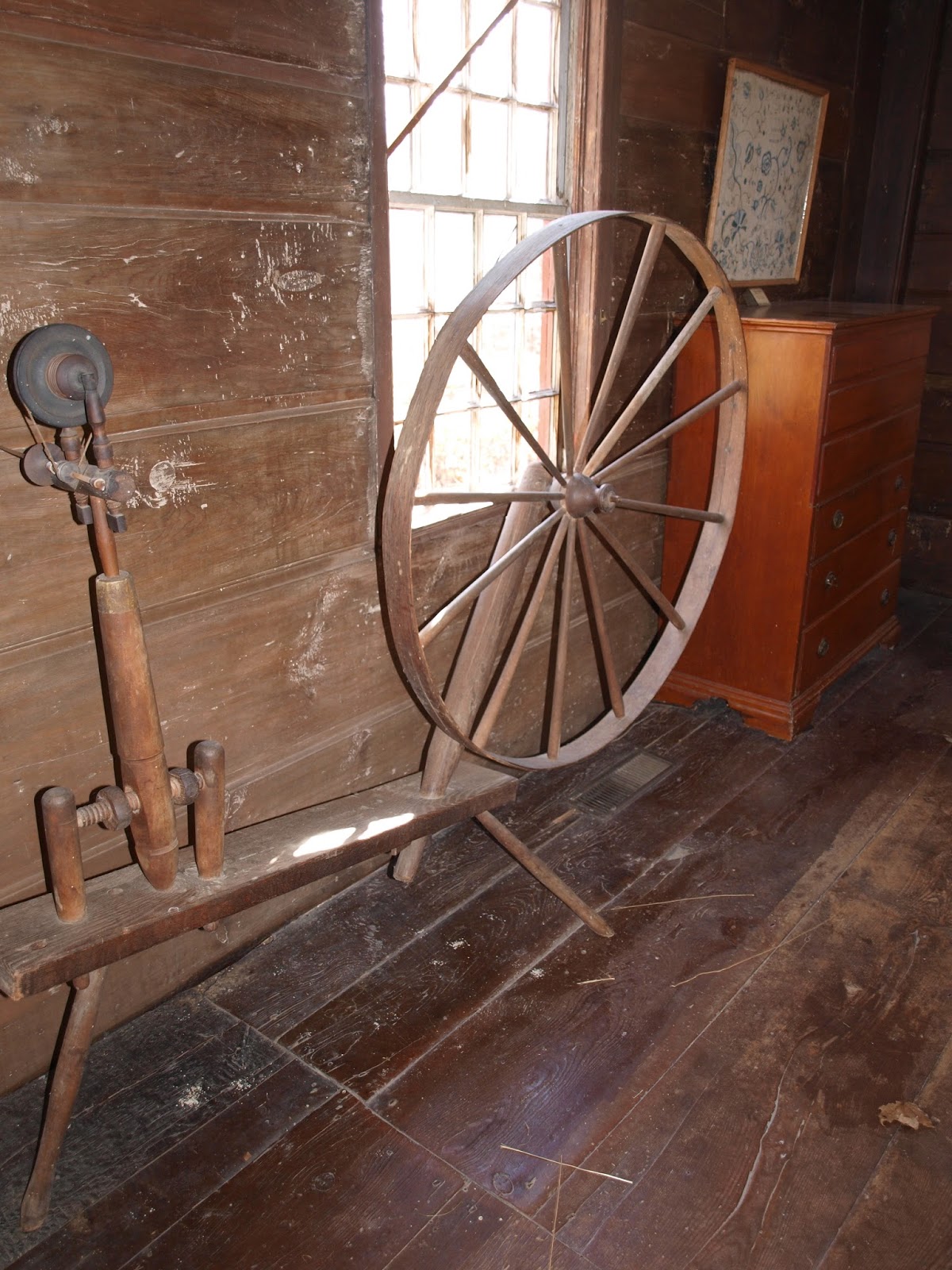Welcome to the Benton Homestead (c.1720) in Tolland, CT! This farmhouse was built by Daniel Benton on a 40 acre homestead, and six generations of the family lived in it. The house is now a museum of life in the 1700s. The house was little changed from it's original design, and the paint colors, kitchen hearth, and other portions have been restored by the Tolland Historical Society. The house is the oldest remaining building in Tolland which will celebrate it's 300th anniversary next year!
 I was invited to help out during a school field trip by my friend Felicia who is a member of the Tolland Historical Society and fellow Audubon program teacher. I jumped at the chance to assist and learn more about Colonial life. Growing up in Arizona did not afford many opportunities to experience Colonial history in such a hands on, and real way. Plus, I got to dress up in fun costumes!
I was invited to help out during a school field trip by my friend Felicia who is a member of the Tolland Historical Society and fellow Audubon program teacher. I jumped at the chance to assist and learn more about Colonial life. Growing up in Arizona did not afford many opportunities to experience Colonial history in such a hands on, and real way. Plus, I got to dress up in fun costumes!
Touring the house we presented what life would have been life for children growing up during the 1700s. We talked about the chores boys and girls would have had, and what they would have been learning. The kids learned that life was full of hard work necessary to have the food, clothing, and warmth to survive.
 Our first stop on our tour was the well, here each student got to try carrying two buckets of water using a yolk. The kids learned that boys would be responsible for bringing inside about 15 gallons of water each day, plus many, many trips of firewood before they headed to the fields to tend animals, crops, chop firewood, or build those famous New England stonewalls.
Our first stop on our tour was the well, here each student got to try carrying two buckets of water using a yolk. The kids learned that boys would be responsible for bringing inside about 15 gallons of water each day, plus many, many trips of firewood before they headed to the fields to tend animals, crops, chop firewood, or build those famous New England stonewalls.  The first room we entered in the house was the Hall, named after the main room in an English castle. This room displayed the tools used in converting raw fiber materials into cloth. The kids learned about the processes for both flax-linen and sheep's wool. They got to card some wool, feel the raw materials, and see finished products. Girls learned that they would start learning to sew at the age of 4, and would be experts by the time they were 13. In the 1700s each family would have about a dozen sheep each giving about 10 pounds of wool. The wool would have to be boiled and washed, carded, spun into string, and woven into material. The material would then be sewn into skirts, shirts and other clothing or used as a blanket. After spending 15 minutes in that room everyone had a better appreciation for our clothes and how easy it is for us to get them.
The first room we entered in the house was the Hall, named after the main room in an English castle. This room displayed the tools used in converting raw fiber materials into cloth. The kids learned about the processes for both flax-linen and sheep's wool. They got to card some wool, feel the raw materials, and see finished products. Girls learned that they would start learning to sew at the age of 4, and would be experts by the time they were 13. In the 1700s each family would have about a dozen sheep each giving about 10 pounds of wool. The wool would have to be boiled and washed, carded, spun into string, and woven into material. The material would then be sewn into skirts, shirts and other clothing or used as a blanket. After spending 15 minutes in that room everyone had a better appreciation for our clothes and how easy it is for us to get them.  |
| A spinning wheel for making wool string. |
 |
| Each room had a fire place, but the house would have still be very cold compared to today's standards. Fibers on the table in different stages of processing. |
We also toured the kitchen, parlor, the in-law addition called the Ell, the cellar, and the kitchen garden. In each space the kids got to learn how things were different and the same, and how the rooms and places were used. In the kitchen the kids got to see how different things were without electricity. They learned that the parlor was an adults only space, the cellar was used as a jail during the revolutionary war, and the Ell was built over the old well with a trapdoor for indoor plumbing!
The kids and I learned lots about colonial times, had a fun time, and were all thankful to be living with modern conveniences!
The Kitchen
 |
| Gail, the director of the museum, prepares the kitchen for students. |
 |
| The wash bin on the left was used for cleaning everything. dishes, clothes, and a bathtub |
 |
| Gail in the kitchen with a beautiful cape. She has a very authentic costume. |
The parlor- adults only! room.
 |
| a reproduction letter from Daniel Benton, colored glasses, and writing desk. |
The Ell
Felicia in the Ell. The trapdoor to the well is just under the table.
 |
| The pantry in the Ell |




No comments:
Post a Comment